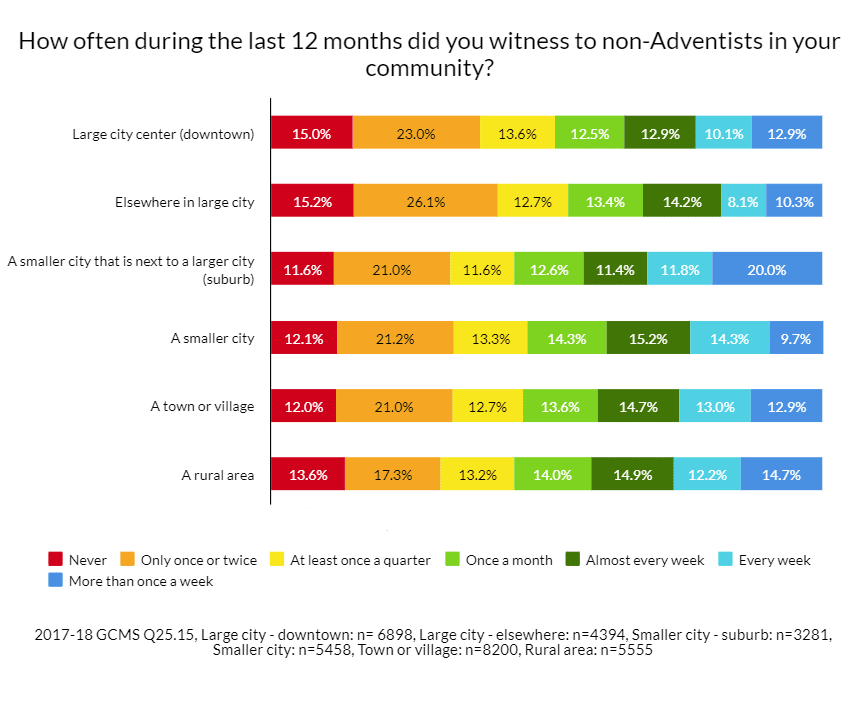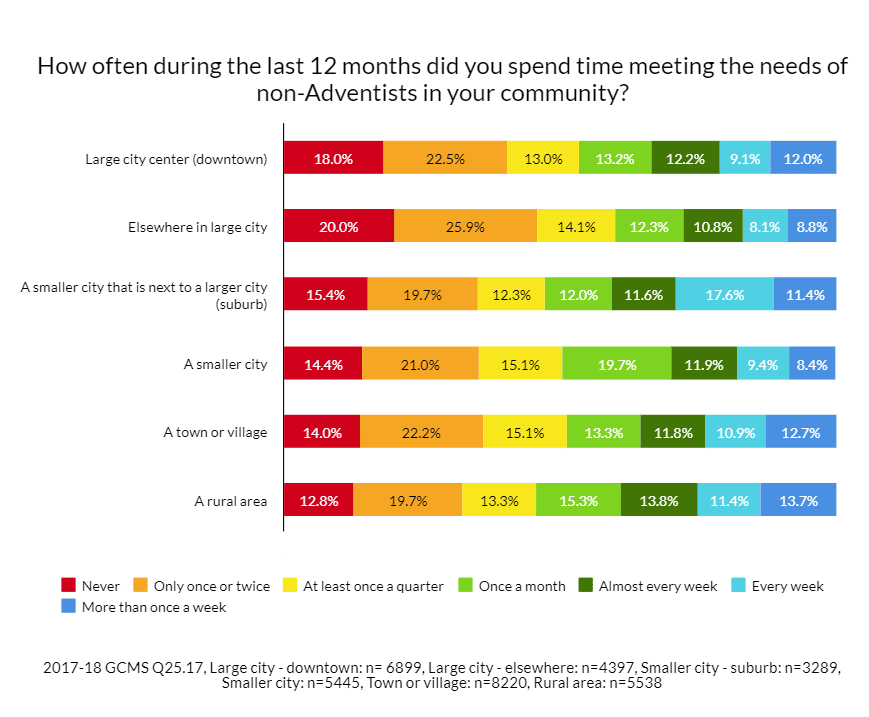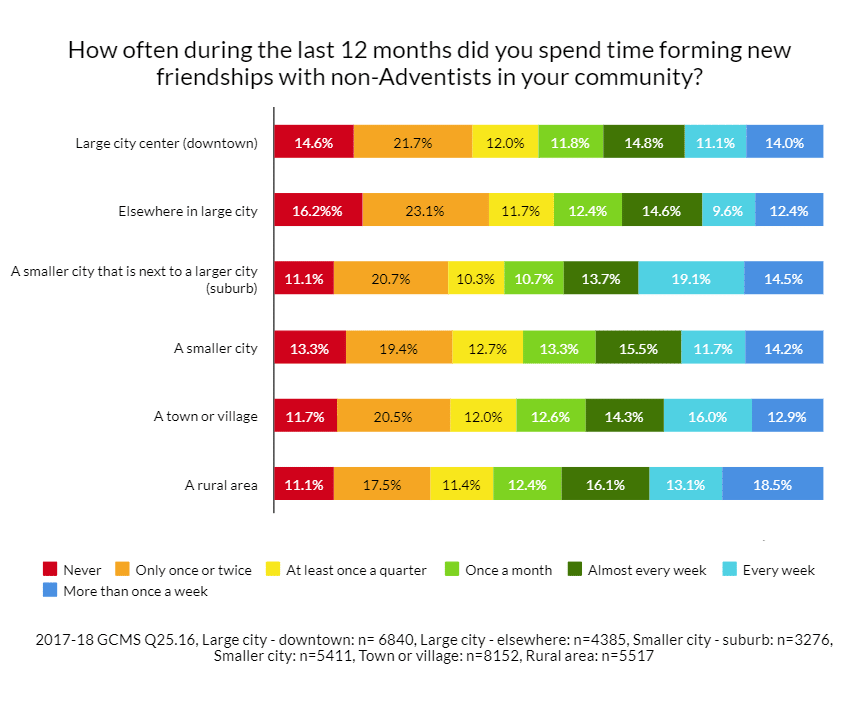In our last blog, we looked at how the location of a local church impacts how often church members serve in various capacities and whether the church plans activities for the whole family. However, you might be wondering, “How does a church’s location impact its outreach into the community—specifically to non-Adventists?” The 2017–2018 Global Church Member Survey (2017–18 GCMS) asked respondents questions about that; these findings were then cross-tabulated with respondents’ local church settings.
Witnessing to Non-Adventists
When survey respondents were asked how often in the last year they had witnessed to non-Adventists, members who attended church in the suburbs were most likely (43%) to have witnessed to non-Adventists almost every week or more often, followed by those who attended church in a rural area (42%) or in a town/village (41%). Those who attended church elsewhere, in a big city, were least likely (33%) to have witnessed to non-Adventists in the last year.

A church’s proximity to an Adventist institution did not appear to impact members’ willingness to, and/or involvement with, witnessing to non-Adventists.
Meeting the Needs of Non-Adventists
Tagging on to the previous question, respondents were also asked how often in the last year they had spent time meeting the needs of non-Adventists in their communities. Respondents who attended church in the suburbs were, again, most likely (41%) to report meeting the needs of non-Adventists almost every week or more often. Nearly two in five (39%) survey participants who attended church in a rural area reported the same. Those who attended church elsewhere, in a big city (28%) or in a smaller city (30%), were least likely to have spent time meeting the needs of non-Adventists in their community during the last year.

Again, a church’s proximity to an Adventist institution did not appear to impact member’s willingness to, and/or involvement with, meeting the needs of non-Adventists.
Forming New Friendships with Non-Adventists
Finally, 2017–18 GCMS respondents were asked how often in the last year they had spent time forming new friendships with non-Adventists. Nearly half of the respondents in rural areas (48%) and in suburbs (47%) were most likely to have spent time forming such friendships almost every week or more often. Those who attended church elsewhere, in a large city, were least likely (37%) to have done so.

According to the 2017–18 GCMS data, a church’s proximity to an Adventist institution did not impact member’s involvement in forming friendships with non-Adventists in the community.
Do the results shared in the last two blogs surprise you? Could it be that while those who live in a city are closer in proximity to each other, they live more separate, isolated lives? That those who live in smaller communities are more involved in each other’s lives? Consider your own church location. How often are you involved in such activities?
Church Locations of the Global Survey Participants: What do These Data Mean? Part 1 can be found here.
For more research findings on the total sample, please see the Meta-Analysis Report.
Created in collaboration with the Institute of Church Ministry
Published by ASTR on 09-21-2022

